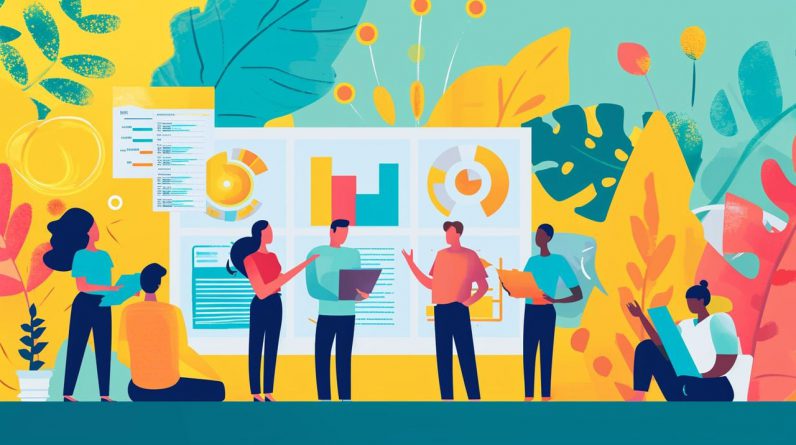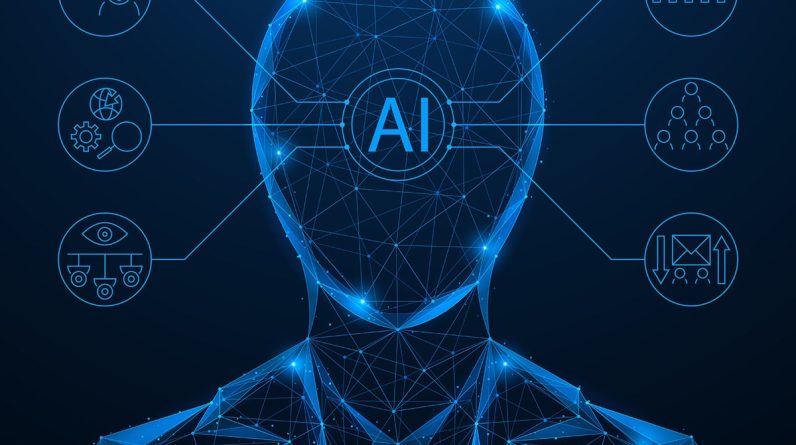
Have you ever wondered how the rise of AI might affect your job? With predictions that 47% of U.S. workers are at risk of job loss to automation over the next decade, it’s a question that’s becoming increasingly relevant. The development of AI tools is transforming industries at an unprecedented pace, leading to both opportunities and challenges. The AI GRID because put together an in-depth overview of what AI job losses may look like in the coming years.
Statistics Surrounding AI Job Loss
Key Takeaways :
- AI and automation are significantly reshaping the workforce, leading to job losses and changes in employment dynamics.
- By 2025, 2 million manufacturing jobs could be automated, and by 2030, 14% of the global workforce may need to transition to new careers.
- Data entry jobs are particularly vulnerable, with 7.5 million positions predicted to be lost by 2027.
- Nearly 47% of U.S. workers face the risk of job loss to automation over the next decade.
- 25% of CEOs anticipate job cuts of 5% or more due to generative AI in 2024, while 75% believe AI will bring significant changes within three years.
- 44% of companies planning to implement AI expect it to result in layoffs in 2024.
- 80% of the U.S. workforce could see at least 10% of their tasks affected by large language models.
- By 2027, 65% of tasks related to data processing and information could be fully automated.
- 120 million workers will need retraining to meet changing business demands over the next three years.
- 23.5% of U.S. companies have replaced workers with ChatGPT, with larger organizations twice as likely to adopt AI compared to smaller enterprises.
- Only 34% of organizations are actively reskilling employees to work with new AI tools.
- Economic and legal barriers may delay the automation of half of the current worldwide tasks by up to 20 years.
- Professions such as law and medicine may resist AI adoption due to legal and safety concerns.
- 27% of workers with a bachelor’s degree or higher are employed in jobs most exposed to AI, and these workers tend to earn more.
- 75% of organizations are likely to implement AI technologies by 2027.
- Overcoming challenges such as workforce retraining and addressing legal and economic barriers is crucial for realizing the economic gains from automation.
The Impact of AI Development on Job Loss and Workforce Changes
Artificial Intelligence (AI) and automation are reshaping the workforce landscape, leading to significant changes in employment. As you navigate this evolving environment, understanding the implications of AI on job loss and workforce dynamics is crucial. This guide delves into the statistics, business perceptions, and barriers associated with AI adoption, providing a comprehensive analysis of its impact.
AI and automation are poised to replace a substantial number of jobs across various sectors. By 2025, it is estimated that:
- 2 million manufacturing jobs could be automated
- By 2030, around 14% of the global workforce, equating to 375 million workers, may need to transition to new careers due to AI advancements
- Data entry jobs are particularly vulnerable, with 7.5 million positions predicted to be lost by 2027
- In the U.S., nearly 47% of workers face the risk of job loss to automation over the next decade
These predictions highlight the significant impact AI and automation will have on employment, necessitating a proactive approach from individuals, businesses, and policymakers to adapt to the changing landscape.
Business Leaders’ Perceptions
The perceptions of business leaders regarding AI’s impact are mixed but significant. About 25% of CEOs anticipate that generative AI will lead to job cuts of 5% or more in 2024. A substantial 75% of CEOs believe that generative AI will bring about significant changes in their businesses within the next three years. Furthermore, 44% of companies planning to implement AI expect it to result in layoffs in 2024.
These perceptions underscore the need for businesses to carefully consider the implications of AI adoption on their workforce and develop strategies to manage the transition effectively. This may involve reskilling and upskilling employees, as well as creating new roles that leverage the capabilities of AI and human expertise.
Impact on Tasks and Skills
AI’s influence extends beyond job loss to the transformation of tasks and required skills. Approximately 80% of the U.S. workforce could see at least 10% of their tasks affected by large language models. By 2027, it is projected that 65% of tasks related to data processing and information could be fully automated. Consequently, 120 million workers will need retraining to meet the changing demands of businesses over the next three years.
This shift in task structures and skill requirements emphasizes the importance of continuous learning and adaptability in the workforce. Individuals must proactively seek opportunities to acquire new skills and knowledge to remain competitive in the job market. Businesses, on the other hand, should invest in training and development programs to ensure their employees are equipped to work alongside AI technologies effectively.
Here are a selection of other articles from our extensive library of content you may find of interest on the subject of artificial intelligence :
Adoption and Barriers
AI adoption varies significantly across organizations. Currently, 23.5% of U.S. companies have replaced workers with ChatGPT. Larger organizations are twice as likely to adopt AI compared to smaller enterprises. However, only 34% of organizations are actively reskilling employees to work with new AI tools. This disparity highlights the challenges smaller businesses face in integrating AI technologies.
To overcome these barriers, smaller businesses may need to explore collaborative partnerships, seek government support, or invest in targeted training programs to bridge the gap in AI adoption. Policymakers can also play a role in providing incentives and resources to encourage widespread AI integration across businesses of all sizes.
Economic and Legal Barriers
Despite the potential benefits, several economic and legal barriers hinder widespread AI adoption. It may take up to 20 years to automate half of the current worldwide tasks due to these obstacles. Professions such as law and medicine may resist AI adoption due to legal and safety concerns, further complicating the integration process.
Addressing these barriers will require a concerted effort from businesses, policymakers, and regulatory bodies. Establishing clear guidelines, standards, and frameworks for AI development and deployment can help mitigate legal and ethical concerns. Additionally, investing in research and development to improve the reliability, transparency, and safety of AI systems can build trust and confidence in their adoption.
Educational Impact
AI’s impact on education and skill requirements is profound. About 27% of workers with a bachelor’s degree or higher are employed in jobs most exposed to AI. Interestingly, workers in these highly exposed jobs tend to earn more than those in less exposed positions. This trend underscores the importance of higher education and specialized skills in the AI-driven job market.
Educational institutions must adapt their curricula to equip students with the skills and knowledge necessary to thrive in an AI-driven world. This may involve incorporating AI and data science courses, fostering interdisciplinary learning, and emphasizing problem-solving, critical thinking, and creativity skills that complement AI capabilities.
Future Outlook
Looking ahead, the adoption of AI is expected to grow, with 75% of organizations likely to implement AI technologies by 2027. While the economic gains from automation are promising, realizing these benefits will require overcoming significant challenges, including retraining the workforce and addressing legal and economic barriers.
To navigate this future successfully, individuals, businesses, and policymakers must work together to:
- Promote continuous learning and skill development
- Foster collaboration and knowledge sharing
- Establish clear guidelines and standards for AI development and deployment
- Invest in research and development to improve AI reliability and safety
- Provide support and resources for businesses of all sizes to adopt AI technologies
By taking a proactive and collaborative approach, we can harness the potential of AI while mitigating its negative impacts on the workforce.
AI and automation are set to transform the workforce, leading to job losses, changes in task structures, and the need for extensive retraining. Business leaders must navigate these changes carefully, balancing the benefits of AI with the challenges of adoption and integration. Understanding these dynamics will be crucial for staying competitive in an increasingly automated world. By embracing continuous learning, fostering collaboration, and establishing clear guidelines, we can shape a future where AI and human expertise work together to drive innovation and growth.
Video Credit: AI Grid
Filed Under: AI, Top News
Latest Geeky Gadgets Deals
If you buy something through one of these links, Geeky Gadgets may earn an affiliate commission. Learn about our Disclosure Policy.
Originally Appeared Here








